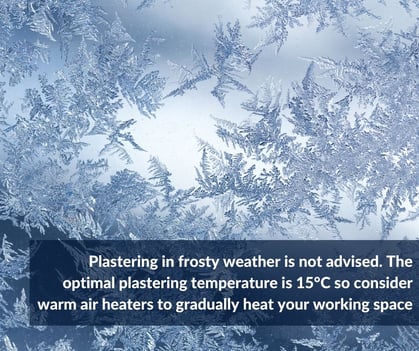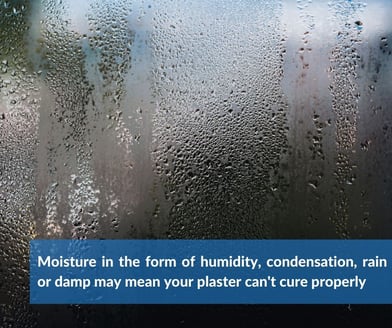Plastering
Plastering in All Seasons: Understanding the Seasonal Impacts on Your Walls
We wouldn’t be British if we didn’t like a good chat about the weather. However, the weather is fairly crucial for those in the plastering industry so you may find yourself on daily weather watch. With plastering being a process for internal walls, you would think that the weather wouldn’t be a problem. However the seasons certainly should be considered especially when planning your job and factoring in the time the plaster takes to cure.
The Impact of Cold Weather
Cold weather will of course increase the setting time of your plaster meaning you should plan in additional time to complete your job. If it is a prolonged cold spell, your plaster may in fact never fully dry as water is unable to evaporate at cold temperatures. Since water is added to pre-bagged plaster, temperature is an important consideration. Water freezes at 0°C so it is crucial to maintain a temperature of at least 4.4°C whilst plastering and for 48 hours afterwards. The strength of the plaster will be compromised with slower water absorption. Keeping temperatures as constant as possible is key as fluctuations can cause movements in the substrate.
What can you do?
In cold conditions you can use warm air heaters to increase the temperature. We would advise to gradually warm a day prior to plastering so as not to cause a sudden temperature rise and therefore condensation from warm air coming into contact with cool surfaces. You can also store your tools in a warm place. Cranking the heating up to blast the room with warm air is a no-no as you want the plaster to dry as naturally as possible to cure the plaster properly and allow it to gain strength. If you are putting the heating on, keep it on low (not above 17°C).
The Impact of Frost

Frost is a nightmare for plaster with building authorities such as NHBC advising you to avoid plastering if conditions are frosty. You should also protect your plaster from frost for at least 24 hours after it has first set. Plaster should never be applied to frozen substrate since it can freeze on the wall, weaken and fall off.
What can you do?
Just as above with cold temperatures, the only way to avoid frost is to warm the area you are plastering in, however this should be done gradually and the room should never become excessively hot. Don’t forget, the optimal plastering temperature is 15°C.
The Impact of Heat
Extremely dry and hot conditions can cause plaster to dry out too quickly, weakening the material, causing cracking and losing flexibility. This can subsequently create a powdery surface which is not a quality surface for the decorative coat. The wall temperature will also affect your plaster; if the surface is too warm it will draw moisture from the plaster.
What can you do?
In hot conditions try a test area to see how long an area is workable for; this will enable you to understand how much plaster you can apply and finish within a set amount of time. Consider the time of day you are plastering. Avoid direct sunlight if possible by starting plastering earlier in the day. You can also keep your tools in a cool spot. Plasters containing cement can be particularly sensitive in the heat so you may need to continually dampen the surface by fogging so the material doesn’t dry too quickly.
The Impact of Moisture

I say moisture in this instance since I’m not only referring to rain but also humidity or condensation. If there is moisture in the air it can slow down the curing of your plaster. If it is a short burst of humid weather or a cold snap that has created condensation inside a warm home, you may be able to plan around the weather however if it is an ongoing damp problem, this can have significant issues. If the moisture is lingering then it could mean it completely stops the plaster drying out or it takes weeks or even months. Continuous damp conditions are unsuitable plastering conditions because if the plaster cannot cure correctly, it is unable to gain full strength. If the plastering remains damp, a subsequent decorative coat cannot be applied properly.
What can you do?
Warm air heaters could be a solution to dry out moisture and damp. However, be sure to ventilate the room you’re working in to avoid further moisture and condensation. Moving cooler air is better than warm stagnant air. Warming the room slowly the day prior to work can be a good solution to remove the dampness without creating further condensation or overheating.
Weather and conditions are equally important to be aware of in terms of storing your materials. Take a look at our blog here for more advice and guidance>.



